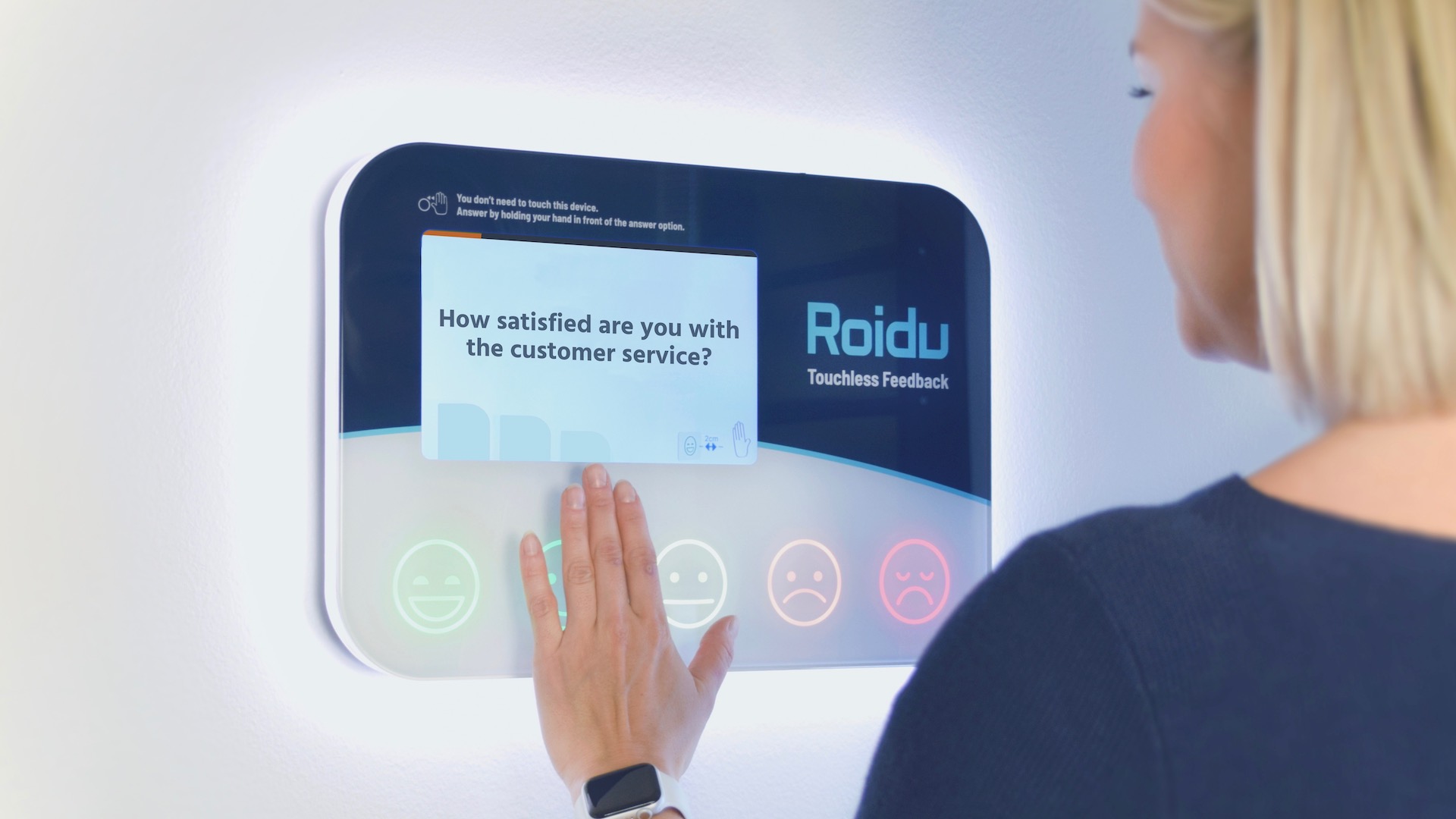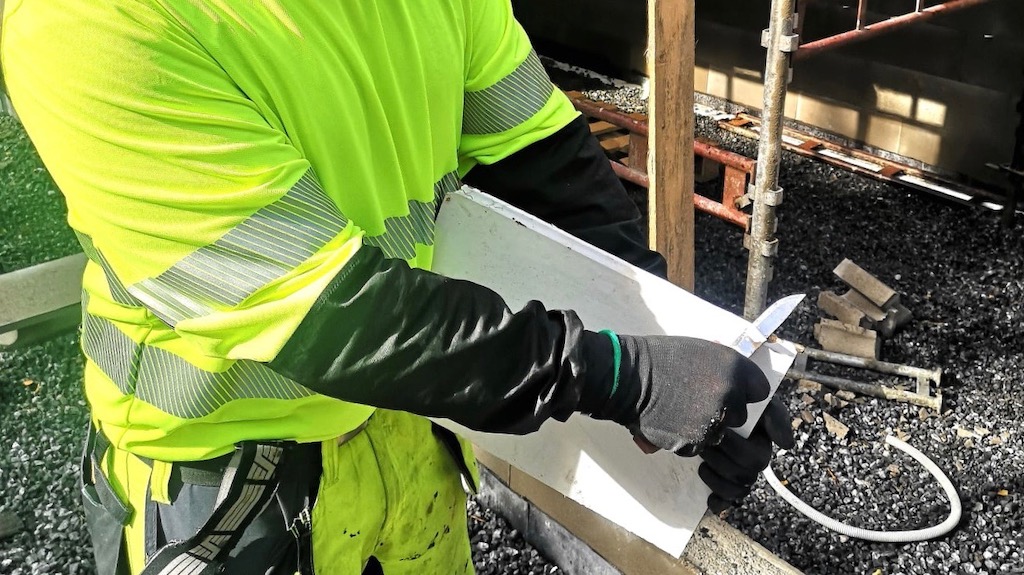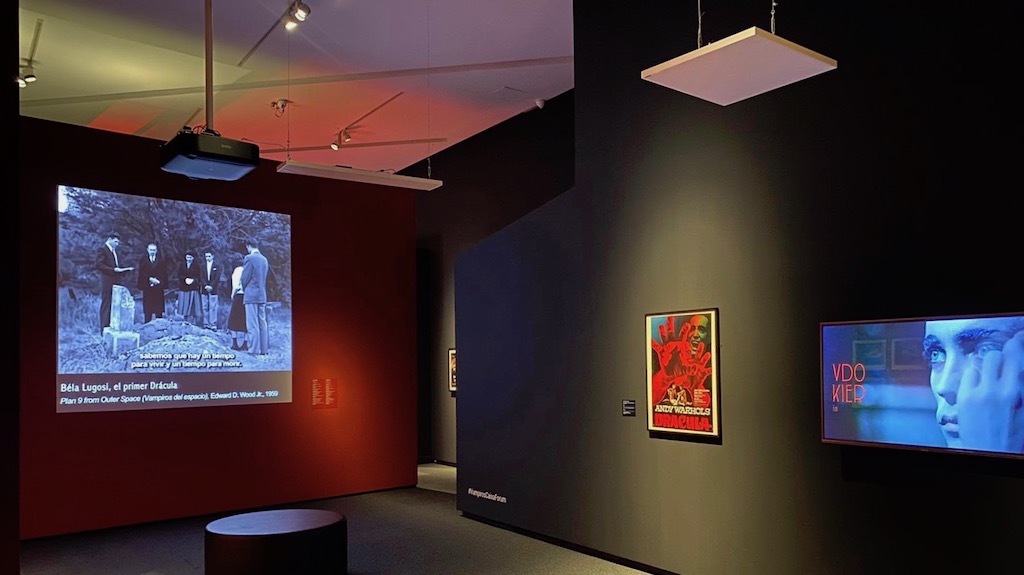Will to accept new challenges, agility to seize new technologies, curiosity – combination that makes Tampere City Region innovative
14.10.2021
Roidu and Touchless Feedback device. Orneule and Cutlon, the cut-resistant fabric. Panphonics and directional audio. These unique innovations have one thing in common: they all come from the Tampere City Region, Finland.
Roidu innovated a genuinely touchless feedback device
How satisfied are you with the customer service? Feedback devices have been available near various exits for quite some time. Tampere-based Roidu has been in the customer feedback business over 10 years, and proudly presents the latest development. Touchless Feedback, a device that you can use without touching it at all.
– Roidu has always been eager to seize new technologies. We wanted to innovate a genuinely touchless device, based on advanced sensors, says Roidu CEO Juha Autio.
The first version of the device had already been finished in Roidu’s customer project. When the company received a funding from Business Finland, it was all systems go for the next level.
Touchless Feedback is also a real Tampere-based innovation, because Roidu’s partner for the development work, UnSeen Technologies, is from Tampere as well. UnSeen is a trusted partner of Roidu, and their history goes back to the times of Nokia – as is often the case in the region.

Demand was as expected
External demand for the Touchless Feedback is gratifying, and helps open new doors for Roidu. COVID-19 pandemic has made touchless solutions more attractive all around the world.
– Everywhere, companies and organisations are now very interested in measuring their customer feedback hygienically. Also the end-users seem to agree, and the amounts of feedback given with our touchless devices are high, says Roidu CCO Juha Yli-Salomäki.
Roidu is not selling only feedback devices but offering turnkey service: multi-channel solutions for measuring customer experience at all stages of the customer path.
Businesses and organisations are increasingly interested in enhancing their customer focus. Even the most comprehensive measuring is not the only key to customer satisfaction, commitment is also required.
– The whole organisation, management at the forefront, needs to use the acquired data in their daily knowledge-based management. That’s how an organisation keeps their promises of customer-centred approach. Roidu will help in this process, says Yli-Salomäki.
Orneule is eager to accept new challenges
Hockey player’s protective gear is like a knight’s armour, and still the player’s arms, for example, may be partially unprotected. An unlucky hit by a skate blade may cause bad injuries. This problem was noted by entrepreneur Toni Nieminen, and he began to think how it could be solved.
This was also the starting point for the story of Cutlon, the cut-resistant fabric. When a suitable fabric was not available anywhere in the world, Orneule, the largest manufacturer of metric knit goods in Finland, joined the development.
– Orneule has always been eager to accept new challenges. We have manufactured chainsaw stoppers, flame retardant materials, knits for military purposes and even for wild board protection, says Orneule CEO Jyrki Uotila.
The cut-resistant fabric was developed from a scratch. Yarns were compared and suitable structures examined to make the product as comfortable to wear as possible. Now Cutlon is ready, tested and standardised to protect against blade cuts. It has an enormous amount of potential uses.
– There are other fabrics available in the market for cut protection. Cutlon’s idea and structure make the difference, it is thinner and more flexible, combining comfort with cut-resistance, says Uotila.
Cutlon was primarily designed for sports, and it has already been in use to protect top NHL players, alpine skiing being the next step. It also has a wide variety of potential uses in work clothing, and has already been introduced in construction and metal industries. Safety and security professionals find it very interesting.

Finnish manufacturer puts emphasis on responsibility
Orneule is located in Orivesi. Every year the company knits over 0,5 million kilos of fabric, which are also dyed and finished in Finland. Orneule believes in environmental responsibility and thus offers recycled fibres and ecological materials. Orneule complies with the Finnish and European environmental laws, which are strict, for example, on the use of chemicals.
For Orneule, Cutlon is one fabric among others, and like all of them, it will be developed further.
– We expect for example to have recycled materials for Cutlon. It is in line with our general aim to always offer a more ecological version when it becomes available, Uotila says.
Panphonics, distinguished around the world
Everyone knows that the Panphonics loudspeakers come from Tampere – at least everyone who appreciates directional audio and all the possibilities it creates. There are no equal products, and news travel fast among those who are audio-oriented.
– Our competitors use different technologies. The Panphonics product has unparalleled sound quality and clarity; these are the reasons why we are chosen, says Joni Onnia, Production Engineer at Panphonics.
Panphonics was founded in 1997 to develop and commercialise electrostatic loudspeakers. The technology is based on an audio element invented by Kari Kirjavainen. Nowadays the company has a global network of distributors and a wide range of public spaces that use their products. Museums, universities, banks, shopping centres…
– Kari had a clear vision of the possibilities that directional audio has to offer. It is still relevant today, but there is a lot of work to be done until it is the acoustic standard everywhere, says Panphonics COO Mia Roivio.

Aiming for better sound environment
Ambient noise can be quite overpowering in places like shopping centres or metro stations. Human brain cannot process all the noises, and if there is an announcement through a traditional loudspeaker, it just adds to the clamour. Directional loudspeakers can direct the sound to a specific area without increasing the overall ambient noise level.
– Directional sound can be used to create audio zones, and in one zone you can’t hear what is said in the next one. It works nicely for example in large study facilities or banks, where private matters are discussed, Roivio says.
COVID-19 pandemic has created new uses for directional audio. Museums have traditionally used headphones for audio guidance, but in the search for more hygienic options they have found directional loudspeakers. They need no cleaning between every visitor, and everyone will be still able to concentrate just on their own guidance.
COVID-19 has also put plexiglass shields between a customer and a customer servant, and masks on their faces. This may bring audibility problems, and directional loudspeakers are the answer to them as well.
The Panphonics team is quite small, close-knit and passionate about their work, making outstanding products in Tampere, Finland. Curiosity, innovativeness and creativity are the driving force of the company, and the straightforward business culture of Tampere contributes it nicely.
The Panphonics sound shower is explained in this video by Lexter (now part of Efterklang).